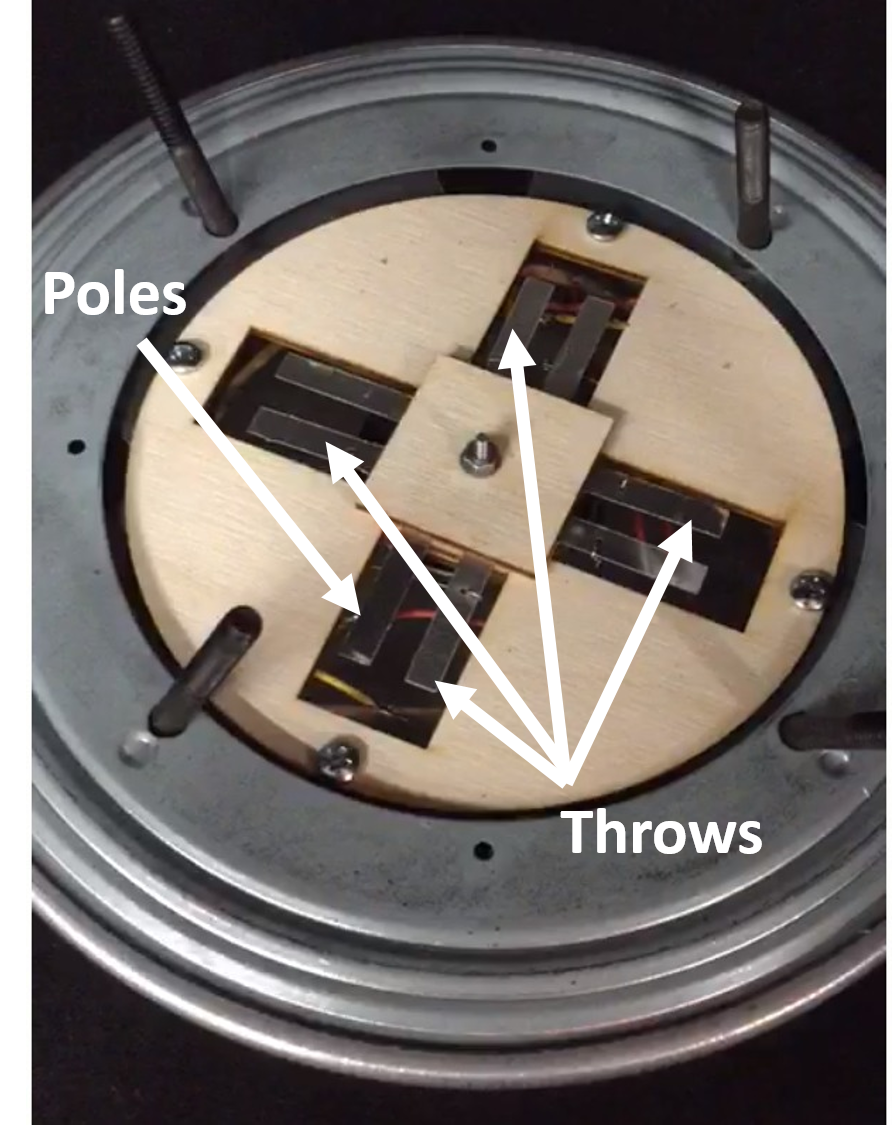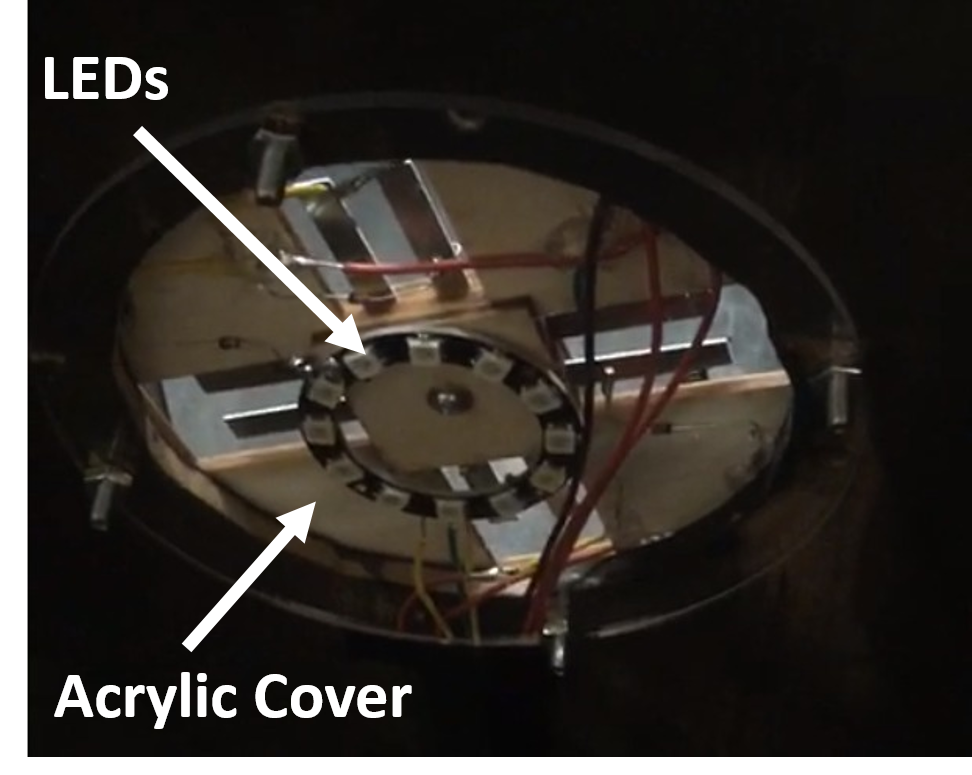Tea Leaf Jars Inner Mechanism
Final Design and Prototype
Jar Inner Mechanism

To achieve the desired rotary motion and switching capabilities, the system is split into two main mechanisms: The Switch mechanism and Turning mechanism. Furthermore, the LED's are integrated into the system to consolidate the number of parts.
Turning Mechanism
Ratchet & Pawl: We tried to design a jar with internals controlled by ratchet and pawl. Given the unidirectional nature of the mechanism, there were concerns regarding the irreversibility of the motion of the jar. So, we decided to experiment with different designs.
Spring-loaded Ball: This mechanism has been tried in different orientations to achieve the desired discrete rotation of the jar around the base of the mechanism. The basic principle behind working of this mechanism is that the balls will ‘click’ and basically rest in discrete spots on either the shaft or the base. The designed mechanism would be able to provide the requisite feedback to let the users rotate the jar to discrete angular positions.
Turntable with Detents: Ultimately, a turntable with in-built detents was used as the turning mechanism. The turntable was purchased from McMaster Carr. The turntable came with 4 in-built detents spaced 90 degrees apart, achieving the functionality of our mechanism.
Switch Mechanism
The initial design for the switch mechanism was to have a spring-loaded ball plunger that would catch onto certain metal detents. The metal wires would then be connected to the metal detents and the ball plungers. However, there was some uncertainty behind the electrical conductivity of the ball plunger and the integration of the switch into the system. Furthermore, there is a need to purchase a slipring that would prevent wires from getting wound up while the jar rotates.
As a turntable with in-built dedents was used for the turning mechanism, we explored other variations for the Switch mechanism. An innovative solution was designed which did not require the need for a slipring in the jar. In a nutshell, the jar's base would carry a protruding metal strip that would bridge the electrical connections in the Switch mechanism below the jar. This can be seen in the CAD below.

The rotary switch mechanism would behave like a single pole and 4 throw switch as shown in the schematic below:

The pole and 4 throws in the new design are labeled below. The metal electrodes are cut with a waterjet machine out of 0.016" thick Aluminium 6061 sheet. The poles and throws are designed with catches to fix them in position in the electrical switch housing.

LED Lighting System
The LEDs are integrated in between the Switch mechanism and the bottom acrylic cover. The shelves are thick enough to hold all the wiring and the house the LED lights. The bottom acrylic cover is used to protect the inner mechanisms from the players while enabling light to pass through.


Full Assembly of Prototype
A full exploded view exhibiting the three integrated systems is shown in the figure below:
